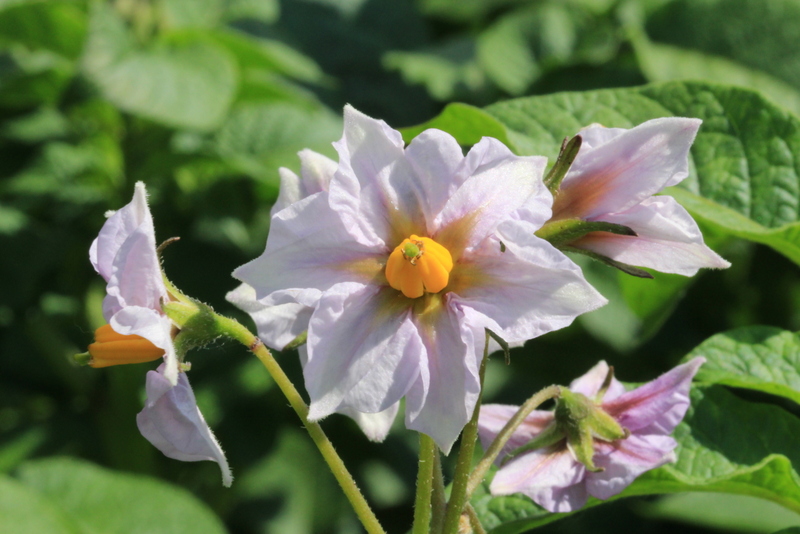Aphid Alert for Week Ending July 5
Fri., July 05, 2013
Here's the catch for the Trapping Period ending July 5, 2013. http://www.aphidalert.blogspot.com/
Aphid catches in many locations are increasing. If not already doing so, producers should be applying crop oils and scouting for aphids. Remember, for crop oils to be most effective, they must be applied prior to the arrival of colonizing aphids. If there are aphids already in the area, application of oils can still limit the spread of PVY. Data indicates applying crop oils twice weekly applications may be more efficacious than once weekly; rapidly growing plants will obviously benefit from more the more frequent application schedule. It's important to use sufficient water to ensure complete coverage.
If aphids are found in fields, treatment with an anti-feedant insecticide such a Fulfill or Beleaf may be indicated. Both products recommend: waiting 7 days applications if a second is necessary, to use sufficient water to ensure complete coverage and ensuring new plant foliage is covered. Because both insecticides work by stopping feeding, aphids may not die immediately, but feeding (and probing) will stop and with it, the transmission of PVY.
Aphid numbers in small grains are established in multiple locations and can be expected to move into potatoes as wheat matures. Soybean aphid numbers are increasing in many areas in MN and ND. This looks to be developing into an aphid vector year. Scout vigilantly, manage aggressively.
Scouting & treating aphids in potatoes:
- select leaves from the lower to mid canopy. Lower, older leaves will have more established colonies and aphids prefer the balance of nutrients found here; aphids are rarely found on leaves in the upper canopy.
- avoid leaves on the ground or in contact with the soil.
- in seed potatoes there is only a threshold for PLRV (10 aphids/100 leaves), reactive application of standard broad-spectrum insecticides are not an effective control for PVY (by the time the aphid has been exposed and dies, it can have moved PVY inoculum into and, more importantly, within the field.
- the use of feeding suppressing insecticides, such as Fulfill (Syngenta Crop Protection) or Beleaf (FMC Corp.) and refined crop oils, such as Aphoil and JMS Stylet Oil, at or prior to field colonization by aphids may reduce the transmission of PVY within fields.
- in table stock potatoes, a treatment threshold of 30 aphids /100 leaves should deter yield loss due to aphid feeding
Always read the label!!
For the tables go to http://www.aphidalert.blogspot.com/





